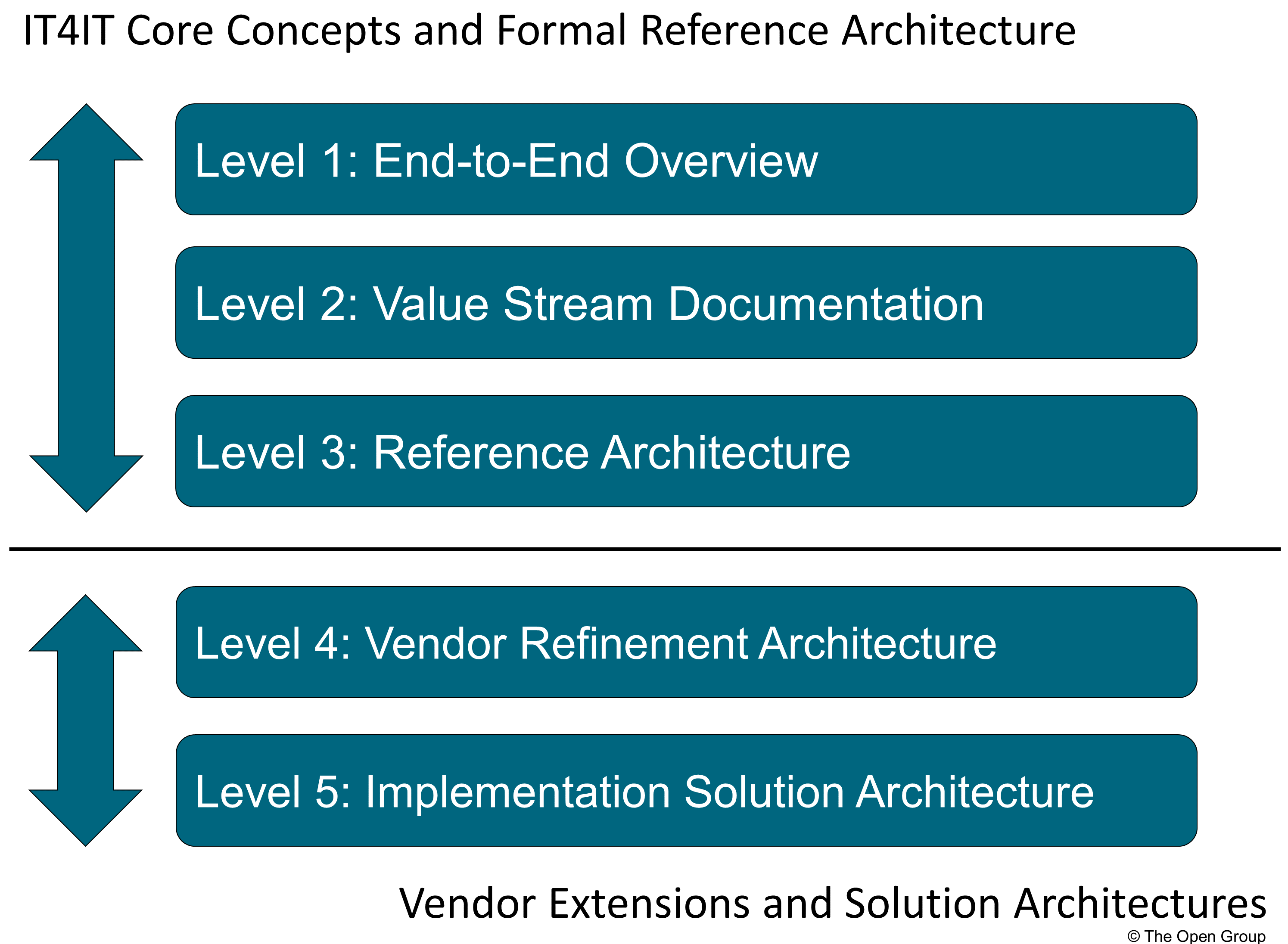IT4IT Abstractions
The IT4IT Reference Architecture is communicated using multiple levels of abstraction, which is inspired by a similar approach employed by the eTOM® frameworks from the TM Forum. Each abstraction level expands on the previous level to expose more details and prescriptive guidance. The upper levels are vendor and implementation independent and provide generic views that are suitable for strategy and planning purposes as well as for creating roadmaps for implementing the IT4IT Reference Architecture. The lower levels provide specific details, ultimately arriving at implementation level or vendor-owned/controlled information. Content at these levels is suitable for developing implementation plans and for facilitating Product Design. The IT4IT Reference Architecture introduces five abstraction levels and standardizes the first three, as shown in IT4IT Abstraction Levels.

Level 1
Level 1 introduces the core concepts that make up the IT4IT Reference Architecture. These include:
-
The seven IT4IT Value Streams
-
The four high-level functional groups (plus the Supporting Functions) needed to manage the world of Digital
-
The notion of a Digital Product
-
The IT4IT concept of key data objects that control the lifecycle of Digital Products
-
The underpinning functional components that control the key data objects
This is documented in Digital Management.
Following from this introduction, the concept of a Digital Product is defined in detail. Level 1 also introduces the concepts of the Product and Service Offer Backbone. This is documented in Digital Product.
Level 2
At this level, the seven essential IT4IT Value Streams are defined as part of the normative standard. This is documented in IT4IT Value Streams.
This chapter also introduces the concepts of:
-
Value stream stages, as a refinement of value streams
-
Stakeholders
Level 3
At this level, the IT4IT Functional Components and data flow across them, the IT4IT Data Objects and their relations are defined as part of the normative standard.
This is structured into five chapters, one for each high-level functional group:
Formal Reference Architecture Model
Levels 2 and 3 of the IT4IT Standard constitute a formal reference architecture. In addition to being documented in the chapters referenced above, it is maintained as an ArchiMate® Extensible Markup Language (XML) model in the ArchiMate model exchange file format.
The metamodel and associated definition of IT4IT terms are documented in IT4IT Concepts and Metamodel.